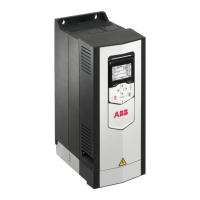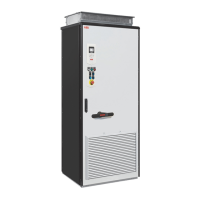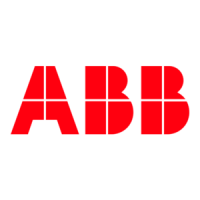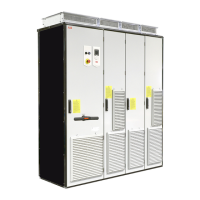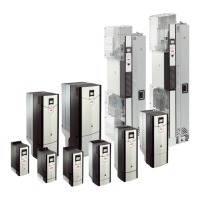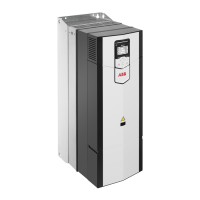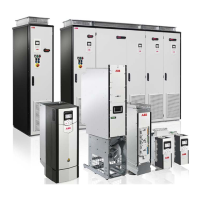Do you have a question about the ABB ACS880-07 and is the answer not in the manual?
Explains the use of warning symbols and notes in the manual to convey important information and hazards.
States that the manual only includes safety instructions related to the scope of this specific document.
Provides essential electrical safety precautions for all personnel working on the drive, motor cable, or motor.
Defines the specific ABB drive models and options for which this manual is applicable.
Identifies the intended audience for the manual, expecting prior knowledge of electrical and safety fundamentals.
States ABB's disclaimer regarding the responsibility for the overall safety system implementation and validation.
Lists other relevant ABB manuals and documentation for drives, firmware, PC tools, and safety guides.
Provides definitions for technical terms and abbreviations used throughout the manual for clarity.
Provides a brief overview of the +Q978 option, its purpose, and the modules it utilizes for safety functions.
Summarizes the key wirings and parameter settings required for the emergency stop function of the option.
Illustrates the operation of the Emergency stop, stop category 0 safety function without a safety encoder.
Details the operation of Emergency stop, stop category 1 safety function with time monitoring, without a safety encoder.
Details the operation of Emergency stop, stop category 1 safety function with ramp monitoring, without a safety encoder.
Illustrates the operation of the Emergency stop, stop category 0 safety function when a safety encoder is used.
Details the operation of Emergency stop, stop category 1 with time monitoring when a safety encoder is used.
Details the operation of Emergency stop, stop category 1 with ramp monitoring when a safety encoder is used.
Presents example circuit diagrams illustrating the operation principle of the safety functions without a safety encoder.
Describes the fault reaction functions of the FSO and FSE-31 modules and STO function in the drive.
Explains the fault reaction when a failure is detected in the FSE-31 module.
Details how internal faults of the safety encoder and FSE-31 module affect the FSO module.
Describes the factory-installed wiring for the safety option and guidelines for user connections.
Provides information on installing and connecting a main breaker to the safety circuit for specific drive models.
Specifies the required expertise and knowledge for configuring safety functions in the FSO module.
Provides example parameter values for safety functions and emphasizes checking against application requirements.
Lists and describes parameters common to all safety functions within the FSO module.
Details the specific parameters related to the Safe Torque Off (STO) function of the FSO module.
Details the specific parameters related to the Safe Stop Emergency (SSE) function of the FSO module.
Outlines the I/O parameter settings for indication lamps, digital inputs, and outputs for safety functions.
Lists parameters specific to the Emergency stop, stop category 1 safety function using the SS1 function.
Explains how to change the stop category from the default setting 0 to category 1 by adjusting specific parameters.
Details parameters related to the FSE-31 module and safety pulse encoder when used in safety applications.
Specifies parameter settings within the ACS880 primary control program relevant to safety functions.
Lists drive parameter settings for the ACS880 primary control program when using a pulse encoder.
Defines SS1 ramp parameters that must be set for the Emergency stop, stop category 1 option.
Describes the procedure for activating the safety function by pushing the emergency stop button.
Explains the steps required to reset the safety function after it has been activated.
Emphasizes the need for an acceptance test to validate the correct operation of safety functions.
States the requirement for the acceptance tester to be a competent person with expertise in functional safety.
Outlines the mandatory steps and checklist items for performing the acceptance test of safety functions.
Specifies the required content and storage of signed acceptance test reports for safety applications.
Provides a checklist of actions and checks to be performed during the start-up and acceptance test.
Details the maintenance activities required for the safety function after start-up, including periodic testing.
Defines the maximum intervals for periodic proof testing of safety functions based on demand modes.
Provides guidance on decommissioning an emergency stop circuit or drive while maintaining machine safety.
Presents safety data values valid for the default safety circuit design, including assumptions on component operation.
Lists safety component types as defined by IEC 61508-2, categorizing key components used in the system.
Shows safety block diagrams illustrating the components included in safety data calculations and the safety circuit.
Presents a safety block diagram for ACS880-07 and ACS880-17/37 drives in frame R8 configurations.
Presents a safety block diagram for ACS880-07 drives, 12-pulse variants with two contactors.
Presents a safety block diagram for ACS880-07 drives, 12-pulse variants with a main breaker, and ACS880-07LC drives.
Presents a safety block diagram for ACS880-17/17LC/37/37LC drives with nxR8i and frame R11.
Lists relevant failure modes that are considered in the safety function's failure rate value.
Provides information on emergency stop total delay and fault reaction response times for different stop categories.
Lists international standards and European directives relevant to the safety functions and machinery design.
Guides users on how to address inquiries about the product to their local ABB representative.
Provides information on accessing ABB product training resources and programs.
Directs users to the ABB website for finding manuals and other product documents in PDF format.
| Category | DC Drives |
|---|---|
| Efficiency | Up to 98% |
| Power Range | 0.75 kW to 5600 kW |
| Supply Voltage | 380 to 690 V AC |
| Output Voltage | 380 V to 690 V AC |
| Cooling Method | Air-cooled |
| Enclosure Class | IP21 |
| Mounting | Wall-mounted |
| Communication Protocols | Ethernet, Modbus, Profibus, CANopen |

